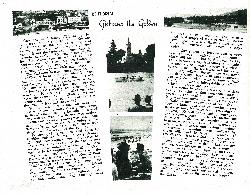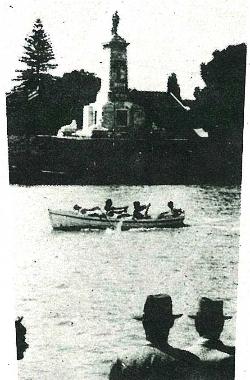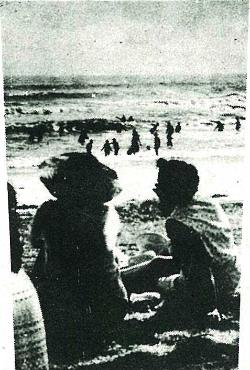2
Editorial . . .Gisborne the Golden
One day in October, 1769, nearly 200 years ago, a little ship sailed into the bay off Gisborne, at the end of a long and wearying journey across the world's loneliest ocean. It was the Endeavour, commanded by Captain James Cook and it brought the first Englishmen ever to set foot on New Zealand soil. Cook and his men landed at Kaiti, crossed the Turanganui River, and streched their legs on Waikanae Beach.
The Gisborne Maoris, long since on the friendliest of terms with their white brothers, did not take kindly to Cook and his party, and the great navigator, sailing away without his expected supplies of fresh food, recorded his feelings for posterity by bestowing the name of "Poverty Bay" on what has since been developed, by the efforts of his own countrymen, into one of the richest parts of the land he had just discovered.
Whalers and other adventures were the next white men to enter Poverty Bay. Then, as the nineteenth century brought the tide of European colonisation to these shores, traders, missionaries, farmers, journeymen and others began to settle in the fertile valley of the Waipaoa River, and the town of Gisborne took shape near the mouth of the Turanganui.
Handicaped by isolation, and beset by troubles with the Maoris, the early pioneers of Poverty Bay fought a long and at times disheartening battle to establish themselves, and no doubt often wondered if Cook had not been justified in his original opinion of the place. One of the most serious setbacks was the Poverty Bay massacre, in 1868, when 35 Europeans and 37 natives were slain by the rebel chief Te Kooti and his savage followers. Lack of a good port and inadequacy of inland communication made Gisborne one of the most solitary towns in the Dominion. Construction work and road building were hindered by an almost total absence of a good local supply of stone or shingle. As the town grew, even a sufficient supply of pure water for household use became a major problem.
But slowly, step by step and year by year, most of these difficulties were surmounted. Many still remain, but in this year, as Gisborne becomes a city, it is fitting to remember the pioneers who made Poverty Bay what it is, and to recall the hardships and disappointments they suffered, the sacrifices they made, and the courage, hope, skill, faith, determination and vision which enabled them to build Cook's "unfortunate, inhospitable place" into a land of peace and plenty.
The visitor to Gisborne to-day, if he does not fail to remember that even with improved access by sea, road, rail and air he is still a long way from anywhere, will find the people of Gisborne and Poverty Bay as hospitable as they are industrious, and as cheerful in prosperity as their forebears were determined in adversity. He will find a smiling countryside and a farming community which together can grow more of the best of everything per acre than anywhere else. He will find an attractive city, with wide streets and modern amenities, intersected by winding rivers, sheltered by green hills, and bordered by beaches of smooth sand. It is true that if he looks around long enough, and closely enough, he can see plenty of work still to be done. The new city still has some bridges to build, some roads to pave, some riverbanks to beautify, and some tourist attractions to develop. These are opportunities to make a beautiful city even more beautiful, and to assure for Gisborne a future as bright as the sun which rises out of the same Pacific Ocean over which the Endeavour sailed so long ago, and each day shines first, of all the cities of the world, on Gisborne the Golden.







